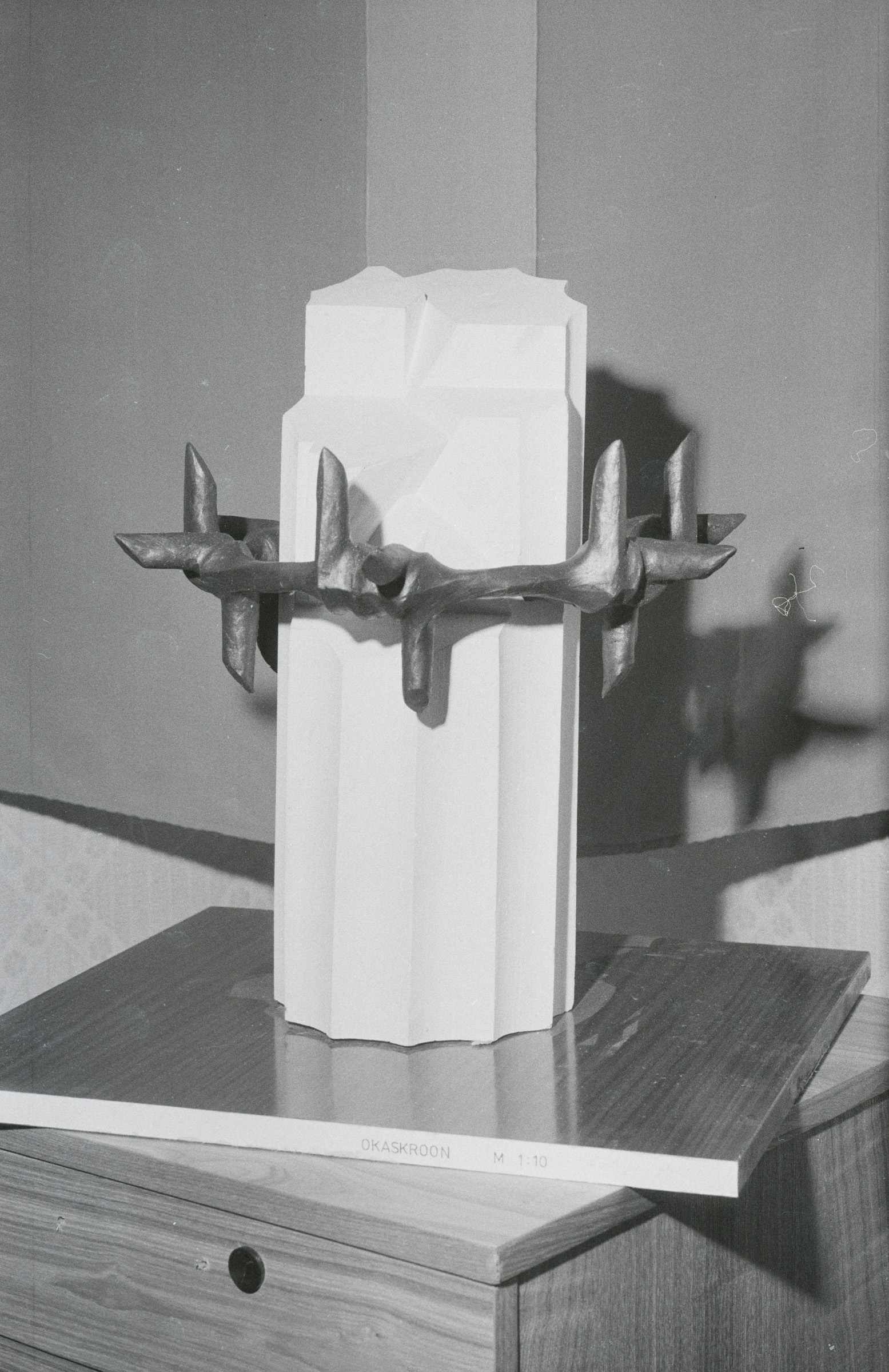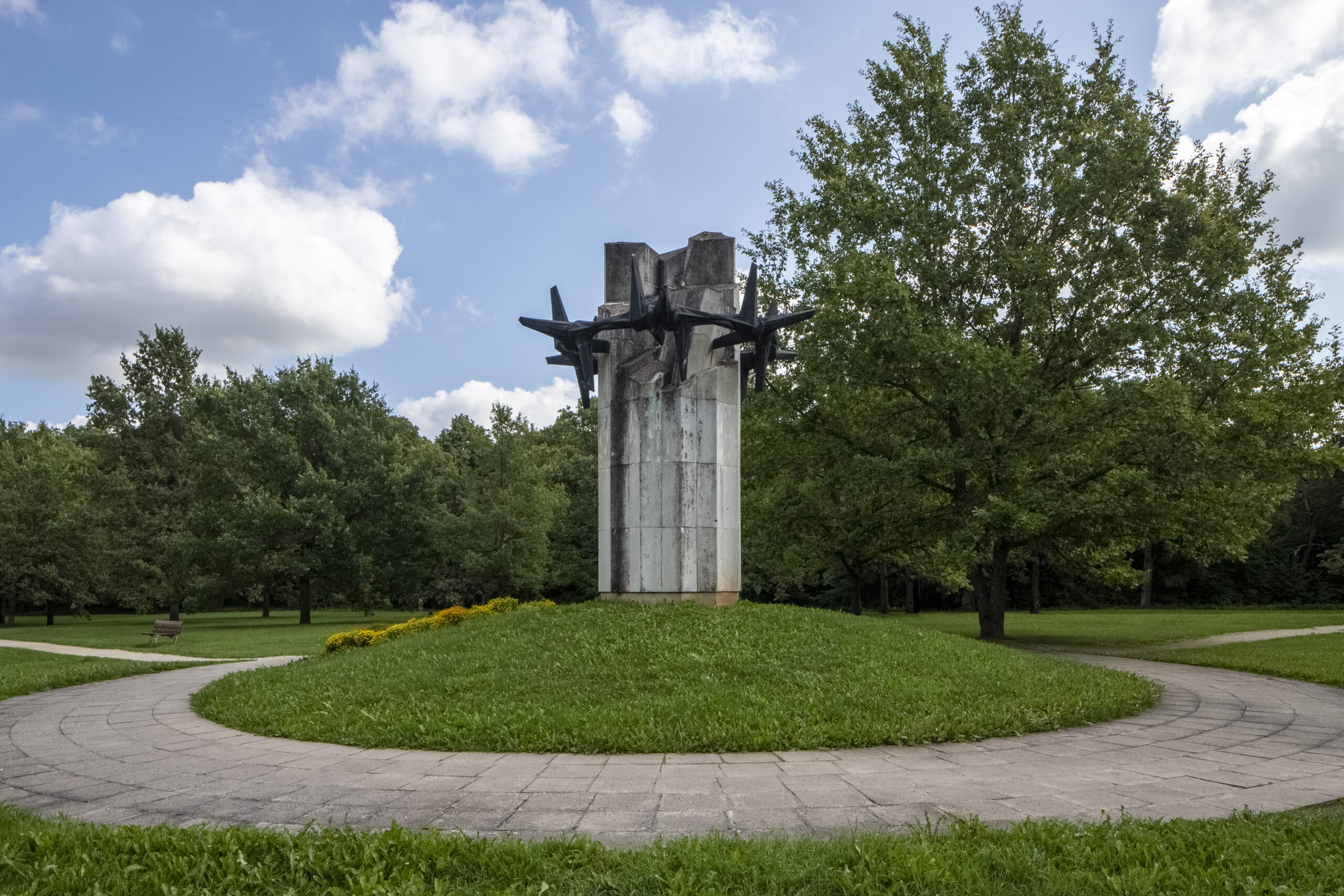Monument Okaskroon (“Crown of Thorns”) to the Repressed People of Virumaa
Year of completion: 1991
Address: Lääne-Viru County, Rakvere, Tammetõru St.
Author Allan Murdmaa
Dolomite, bronze
Height 4 m
Not listed as a cultural monument
Allan Murdmaa (1934–2009) was one of Estonia’s most talented monument creators. With his help, the monuments to Amandus Adamson, Eduard Vilde, Heino Eller, and Oskar Luts were created, as well as the Tehumardi and Maarjamäe memorials. Murdmaa was educated as an architect and not only worked at design institutes, but in the city councils of Tallinn and Viljandi, too. According to Murdmaa, he started working with monuments to escape the routine nine-to-five, which was not creatively challenging enough.
Already his first winning competition work – the Vilde monument opposing the Estonian Writers’ Union section in Tallinn, created in cooperation with sculptor Albert Eskel in 1965 – brought changes into the Estonian sculpture scene. Before that, monuments were predominantly bronze busts placed on granite cuboids, but through his ideas, architectural memorials and the often-dismissed Saaremaa dolomite became well known. Soon enough, Murdmaa studied moulding and stonecutting himself. He actively partook in the work of the national committee for monumental arts as an enthusiast and expert of the field, extensively affecting the development of Estonian public space with his context-sensitive sense of space.
The creation of the monument was inspired by discussions that arose during perestroika about the commemoration of the victims of Stalinism. In 1988, respective organisations were established all over the Soviet Union, and the first memorials for the repressed were erected. A discussion regarding the commemoration of deportation victims began in Rakvere in the summer of 1989. The local newspaper published articles debating whether the monument should be located at Emumägi or Vallimäe hill, and to whom exactly it should be dedicated. It was decided that instead of just the Rakvere district, the memorial will be for all of Virumaa’s people, and its location will be the oak grove next to Vallimäe hill. In January of 1990, a competition was declared, which was won by Allan Murdmaa with his design Okaskroon (“Crown of Thorns”). The construction was funded by the town, district, local economic entities, and people all over Estonia. The monument opened on the 14th of July 1991 on the 50th anniversary of the June deportation. It comprises a four-metre-high pillar in dolomite, with a broken top that is surrounded by a crown of thorns cast from bronze.
The combination of dolomite and bronze has a somewhat anachronistic effect. Although it is a monument of “the Estonian new age”, the artists’ ways of expression and the public’s preferences did not change overnight, which is why Okaskroon is reminiscent of Soviet monuments. The thorny bronze crown in particular evokes the comparison with militaristic barbed wire. Such an interpretation is proven by the fact that when reports came about the monument being vandalised in the 2000s, and the police managed to capture some of the vandals, they did not even know what the monument they were tarnishing represented. Nevertheless, the monument is an important site of memory for the local people, and is the central point of yearly commemoration events. The monument ties the oak grove to the pillars of European culture, which are both the Doric pillar symbolising democracy, and the crown of thorns telling the story of Christ’s sufferings and martyrdom.
Gregor Taul










